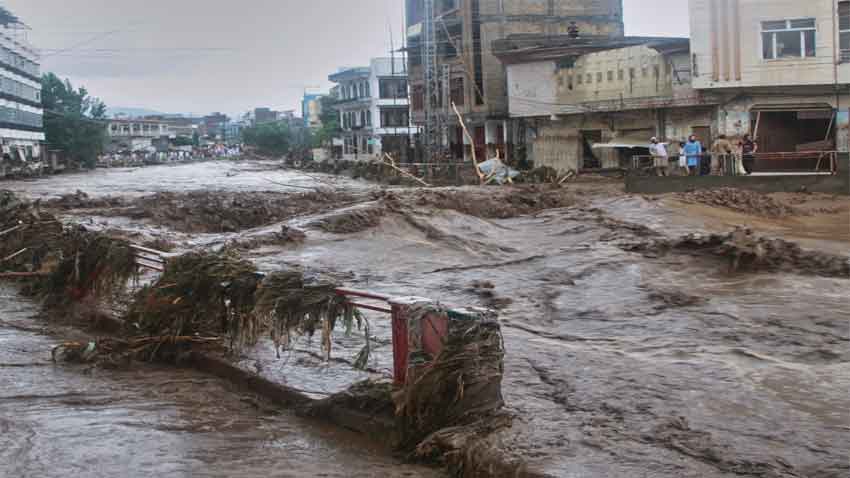
The monsoon has brought havoc across Pakistan in recent days with the death toll from flash floods that hit the mountainous northwest rising to 385. Authorities said an unspecified number of people are still missing.
There have also been heavy monsoon rains in Mumbai, India s financial capital, with some parts of the city drenched with as much as 875.1 mm of rain in the five days to August 20, the local weather department said.
The rains began in Pakistan s financial capital Karachi on Tuesday, causing widespread flooding as rainfall reached levels not seen in years in some parts of the country s biggest city - home to more than 20 million people, Reuters reported.
The deaths were caused by drowning, road accidents, building collapse and electrocution, said Abdul Wahid Halepoto, a provincial government spokesperson.
"I have never experienced rain like this in my life," said Anosha, 30, a creative designer, who did not want to give her full name. "Our car got stuck in the flooded road, water seeped in, and I panicked."
Anjum Nazir, a spokesperson for the provincial meteorological department, said the area around the airport received 163.5 mm (6.4 inches) of rain, the highest recorded there since 1979.
Rescue workers, police, volunteers and government agencies were helping relief efforts, the city s Mayor Murtaza Wahab told a press conference.
"We are using all our resources to clear roads and restore utilities," he said.
Wahab said the rain had overwhelmed the city s infrastructure. The city s drainage system has the capacity to manage 40 mm of rain, and anything above that would spill over into flooding, he said.
Read more: Pakistan lake formed by mountain mudslide threatens ‘catastrophic’ floods
WHAT TO WATCH
Parents of Camp Mystic flood victims gave emotional testimonies before Texas lawmakers about the failure of camp safety measures, lack of protocol and the painful effect on their lives. Flash flooding in July killed 27 campers and camp counsellors on the Guadalupe River in central Texas.
NUMBER OF THE WEEK
That’s how much China s carbon dioxide emissions dropped in the first half of 2025 from the same period last year, helped by growing use of renewable energy to generate power, according to a study by the Helsinki-based Centre for Research on Energy and Clean Air.
CLIMATE LENS
Chart showing seasonal anomalies in the extent of sea ice in Antarctica since the early 1900s.
A paper in the journal Nature showed how the rapid loss of Antarctic Sea ice could be a tipping point for the global climate, causing sea level rises, changes to ocean currents and loss of marine life that are impossible to reverse.
The study gathered data from observations, ice cores, and ship logbooks to chart long-term changes in the area of sea ice, putting into context a rapid decline in recent years.




